Venezuela Fauna
South America is a land of contrasts and the
animal population of Venezuela is fabulously diverse. In our travels we spent time on arid
islands, rain- and cloud-forest, high mountain passes above tree line,
deep river valleys and flooded plains. The larger mammals we hoped to see,
but did not, were the South American bear and the giant anteater.
The first for its scarcity, and the latter for our arrival in the wrong
season (wet as opposed to dry). We did see, but didn't photograph, several
pink river dolphins. Venezuela has many reptile species and we saw, and
photographed, several.
Go to our Venezuela Birding
page to see some of the fabulous avifauna of the country.
Here's a glimpse of some of the reptiles, fish and mammals we found in
Venezuela:
| This young coral snake we found in the grass by
our rafting camp at an elevation of about 1000 feet in the foothills
of the Venzuelan Andes. There are
several species native to Venezuela, and all are poisonous. We
didn't pick up this little 18cm (6-inch) guy. Our jingle for
the North American coral snake: "Red and yellow kill a fellow, red and black friend of
Jack" does seem to work for this species, although the "yellow"
is more like white. |
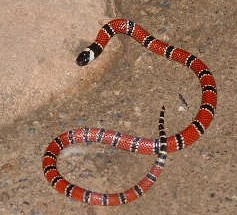 |
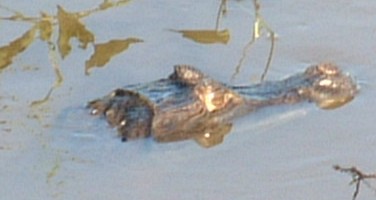 |
Fresh water caiman inhabit the rivers and tributaries
of Los Llanos, Venezuela. During the day they tend to laze about in the cool water.
At night, as we motored along the river our flashlights picked up the red
gleaming eyes of dozens of them on the river banks. They reach only about
2.4m (8 feet) and are not very aggressive. Their relatives on
Venezuela's Orinoco River
to the east are very aggressive and half again as large. |
| This piranha lives in the floodwaters and tributaries
of the Apure River, in central Venezuela. We fished for them and caught
enough for a tasty dinner. (That's poetic justice, I think.) There are
over 20 species of piranha, but only 2 are carnivorous, including this
18cm (6-inch) orange-bellied one. It and its fellow piranhas stripped the meat
off a cow leg in a couple minutes. |
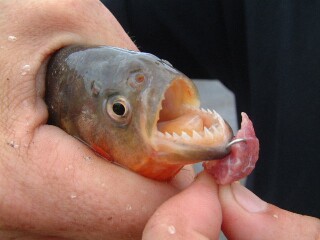
|
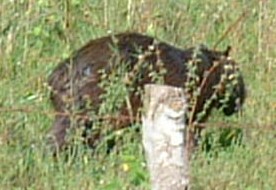 |
The world's largest rodent, the capybara, inhabits
the grasslands and watering holes of Venezuela's plains, called Los Llanos. The largest concentration
are found near and within the borders of private ranches where they are
protected from hunters. They stand about 75cm (2 ft) tall, and about
1.3m (4 ft)
long. In the watering holes they look much like small hippos. |
| Venezuela is home to the South American anaconda
which is
the world's largest snake. This one on the road, warming up after a heavy
rainfall, was only about 3m (9ft) long. He was quite docile, and not perturbed by
all the attention as we came up to take photos. |
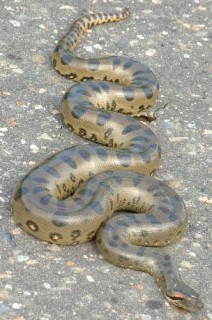 |
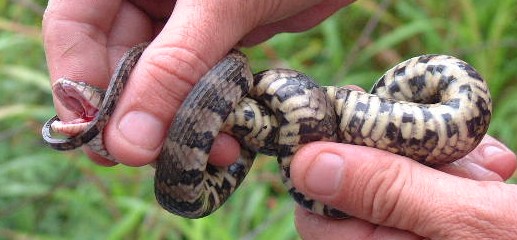 |
Boa constrictors are Venezuela's other constricting
snake beside the anaconda. This one was small enough for our guide, Alan,
to handle briefly. It has a ways to grow before it can swallow an elephant
and feature in Le Petit Prince. |
| The Venezuelan tree boa bears a striking resemblance to the
extremely poisonous fer-de-lance,
with its triangular head and similar markings. Our guide in Los Llanos,
Alan, didn't used to mess with these snakes until he learned that there
are no poisonous tree-dwelling snakes north of Venezuela's Orinoco River (where
we were), and the fer-de-lance eyes don't glow red in the lights at
night. So, he picked this 3-footer off a branch and of the 7 of us, only
Sue wanted to hold it. |
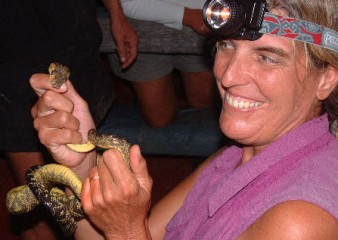 |
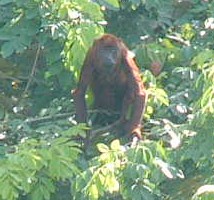 |
Hoots, screams, and howls told us we were approaching a band
of red howler monkeys high in the trees above the Apure River,
Venezuela.
Photos were hard to get, but this animal sat still awhile to watch and
mock us. Others took off, swinging through the branches, calling to each
other. We also saw spider monkeys and capuchin monkeys
(which are frequently captured for the pet trade). |
| A sad, but informative photo: On one shore
of the Venezuela's Apure River lay a huge farm with a
border of native forest which the owner had left natural as a wildlife
corridor. Unfortunately, the jaguars that still prowl the forests
don't know which river bank is safe and which is not. This one crossed the
river and began killing goats and farmyard animals at a small farm. The farmer,
who we met along with his 10 grandchildren,
had no compunction about hanging the skin to dry inside the verandah of
his mud brick home. Jaguars are endangered, and protected by law, but there
will be many more killings like this until the government does more to
encourage the ranchers to keep larger tracts of land wild. The present government
takes "unused" land away from ranchers and redistributes it. |
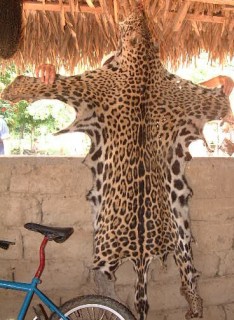 |
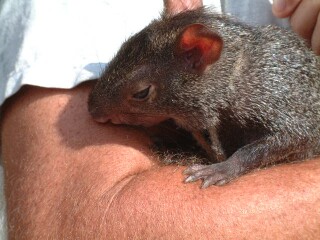 |
Agoutis are common forest-dwelling rodents found not
only in Venezuela, but in the West Indies (especially Trinidad) as well.
This one was a pet on the farm of the jaguar-killers (above.) |
Up | Venezuela Flora | Venezuela Fauna | Venezuela Birds
| Venezuela Home
West Indies Flora/Fauna | Venezuela Flora/Fauna | SW Caribbean Flora/Fauna | Galapagos Flora/Fauna | Fr. Polynesia Flora/Fauna | Tonga & Fiji Flora/Fauna | Australia Flora/Fauna | Southeast Asia Flora/Fauna | Sri Lanka Flora/Fauna | Madagascar Flora/Fauna | Marine Mammals
Top Level:
Home |
Destinations |
Cruising Info |
Underwater |
Boat Guests |
Ocelot |
Sue |
Jon |
Amanda |
Chris |
Site Map |
Make a Comment
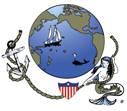 |
Lifetime
Commodores
of the
Seven Seas
Cruising
Association |
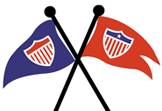 |
|
If our information is useful,
you can help by making a donation
|
Copyright © 2000‑ Contact:
Jon and Sue Hacking -- HackingFamily.com, svOcelot.com.
All rights reserved.

